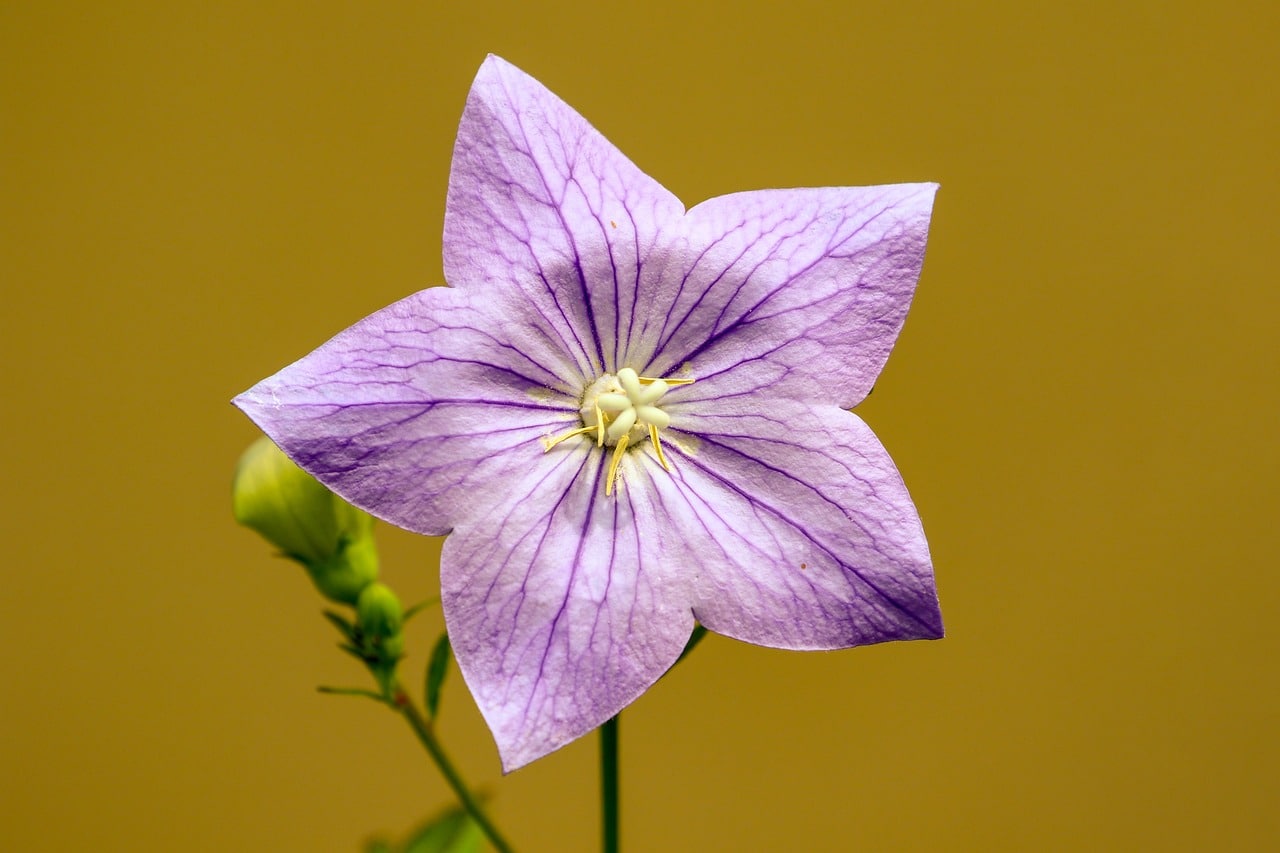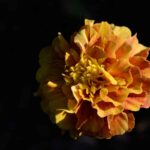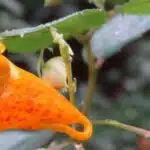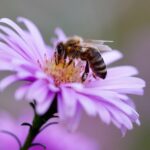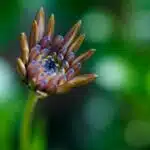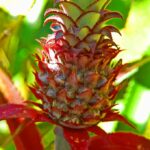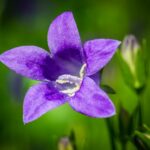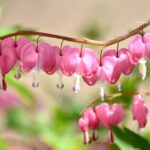If you’re looking for a unique and interesting plant to add to your garden, consider the balloon flower. This plant, also known as the Chinese bellflower or Platycodon grandiflorus, is a perennial that produces strikingly beautiful flowers in shades of blue, white, and pink. But the balloon flower is more than just a pretty plant – it also has a rich cultural history and a range of potential medicinal properties. In this article, we’ll explore the meaning of the balloon flower, its properties, and its uses in different contexts.
The Meaning of the Balloon Flower
Like many plants, the balloon flower has a rich cultural history and a range of symbolic meanings. In Chinese culture, the flower is known as “jie geng” and is believed to have a cooling effect on the body. It’s often used in traditional Chinese medicine to treat conditions like sore throat and coughing.
In Japan, the balloon flower is associated with the idea of perseverance and endurance. This is because the flower’s buds are surrounded by a protective layer of five petals, which must be “popped” in order for the flower to bloom. This act of breaking through the protective layer is seen as a symbol of strength and resilience.
In Western culture, the balloon flower is often associated with childlike wonder and playfulness. This is because the flower’s name comes from its unique shape – when the flower blooms, its petals form a balloon-like shape before fully opening. This whimsical appearance has made the balloon flower a popular choice for children’s gardens and playful, lighthearted settings.
Properties of the Balloon Flower
The balloon flower is more than just a pretty flower – it also has a range of potential medicinal properties. The plant’s roots, in particular, are often used in traditional medicine to treat a range of conditions. Here are some of the potential properties of the balloon flower:
- Anti-inflammatory: The balloon flower has been shown to have anti-inflammatory properties, which may make it useful for treating conditions like arthritis, asthma, and other inflammatory disorders.
- Antimicrobial: Some studies suggest that the balloon flower may have antimicrobial properties, which could make it useful for fighting off infections.
- Anti-cancer: There is some evidence to suggest that the balloon flower may have anti-cancer properties, although more research is needed to confirm this.
- Respiratory health: In traditional Chinese medicine, the balloon flower is often used to treat respiratory conditions like coughing, bronchitis, and sore throat.
- Skin health: The balloon flower may have potential benefits for the skin, as it has been shown to have antioxidant and anti-inflammatory properties.
Uses of the Balloon Flower
So what are some of the practical uses of the balloon flower? Here are a few contexts in which this unique plant can be used:
Gardening
The balloon flower is a beautiful and easy-to-grow plant that can add a unique touch to any garden. Here are a few tips for growing and caring for balloon flowers:
- Planting: Balloon flowers can be planted in the spring or fall, and they prefer well-draining soil and full sun or partial shade.
- Watering: Balloon flowers prefer moist soil, but they can tolerate some drought once they’re established.
- Pruning: To encourage new growth and prevent the plant from becoming too leggy, prune your balloon flowers back by about one-third in late summer.
- Propagation: Balloon flowers can be propagated by division, cuttings, or seeds.
Traditional Medicine
In traditional medicine, the balloon flower has been used for centuries to treat a range of conditions, particularly respiratory issues. In traditional Chinese medicine, the plant is known as “jie geng” and is often used to treat coughing, bronchitis, and sore throat. It’s believed to have a cooling effect on the body, making it useful for treating conditions that involve heat and inflammation.
One of the key components of the balloon flower that’s believed to contribute to its medicinal properties is a compound called saponin. Saponins are plant-based compounds that are often used in herbal medicine for their anti-inflammatory and immune-boosting properties.
Here are a few examples of how the balloon flower is used in traditional medicine:
- Coughs and sore throat: The balloon flower root is often used to make a tea or syrup that can help soothe coughs and sore throats. The root is typically dried and then boiled in water to create a decoction, which is then sweetened with honey or another natural sweetener.
- Asthma and bronchitis: In traditional Chinese medicine, the balloon flower is often used to treat asthma and bronchitis. It’s believed to help open up the airways and reduce inflammation, making it easier to breathe.
- Inflammation: Some studies suggest that the balloon flower may have anti-inflammatory properties, which could make it useful for treating conditions like arthritis and other inflammatory disorders. The plant may be taken internally as a tea or decoction, or applied topically as a poultice or salve.
- Skin health: The balloon flower may have potential benefits for the skin, as it has been shown to have antioxidant and anti-inflammatory properties. It may be used topically to help soothe and heal skin irritations like eczema, psoriasis, and acne.
While the balloon flower has a long history of use in traditional medicine, it’s important to note that more research is needed to fully understand its potential benefits and side effects. As with any herbal remedy, it’s important to talk to a healthcare professional before using the plant for medicinal purposes.
Culinary Uses
Believe it or not, the balloon flower is also edible! In Korea, the flower’s young leaves and roots are often used in salads, soups, and other dishes. The flavor is said to be slightly sweet and nutty, with a texture similar to bamboo shoots.
Ornamental Uses
As mentioned earlier, the balloon flower’s whimsical appearance makes it a popular choice for children’s gardens and other playful settings. But it can also be used in more formal settings – for example, the flower’s blue and white varieties are often used in floral arrangements for weddings and other special events.
Medicinal Uses
As we’ve discussed, the balloon flower has a range of potential medicinal properties, particularly when it comes to treating respiratory conditions and reducing inflammation. Here are a few examples of how the plant is used in traditional medicine:
- Coughs and sore throat: The balloon flower root is often used to make a tea or syrup that can help soothe coughs and sore throats.
- Asthma and bronchitis: In traditional Chinese medicine, the balloon flower is often used to treat asthma and bronchitis.
- Inflammation: Some studies suggest that the balloon flower may have anti-inflammatory properties, which could make it useful for treating conditions like arthritis and other inflammatory disorders.
- Skin health: The balloon flower may have potential benefits for the skin, as it has been shown to have antioxidant and anti-inflammatory properties.
Balloon Flower Varieties
The balloon flower comes in a range of different varieties, each with its own unique appearance and growing requirements. Here are a few examples:
- Blue balloon flower: This variety produces striking blue flowers and can grow up to three feet tall. It’s a popular choice for both ornamental and medicinal uses.
- White balloon flower: The white balloon flower produces beautiful, pure white flowers that can add a touch of elegance to any garden or floral arrangement.
- Pink balloon flower: If you’re looking for a pop of color, the pink balloon flower is a great choice. It produces bright pink flowers and can grow up to two feet tall.
- Dwarf balloon flower: As the name suggests, this variety is smaller than other balloon flowers, growing to a height of just 6-12 inches. It’s a great choice for small gardens or container planting.
Conclusion
The balloon flower is a unique and versatile plant that has a rich cultural history and a range of potential medicinal properties. Whether you’re looking to add a touch of whimsy to your garden, explore the plant’s culinary uses, or tap into its potential health benefits, the balloon flower is definitely worth considering. With a range of different varieties to choose from and a relatively easy growing process, this plant is a great choice for both experienced gardeners and beginners alike.

